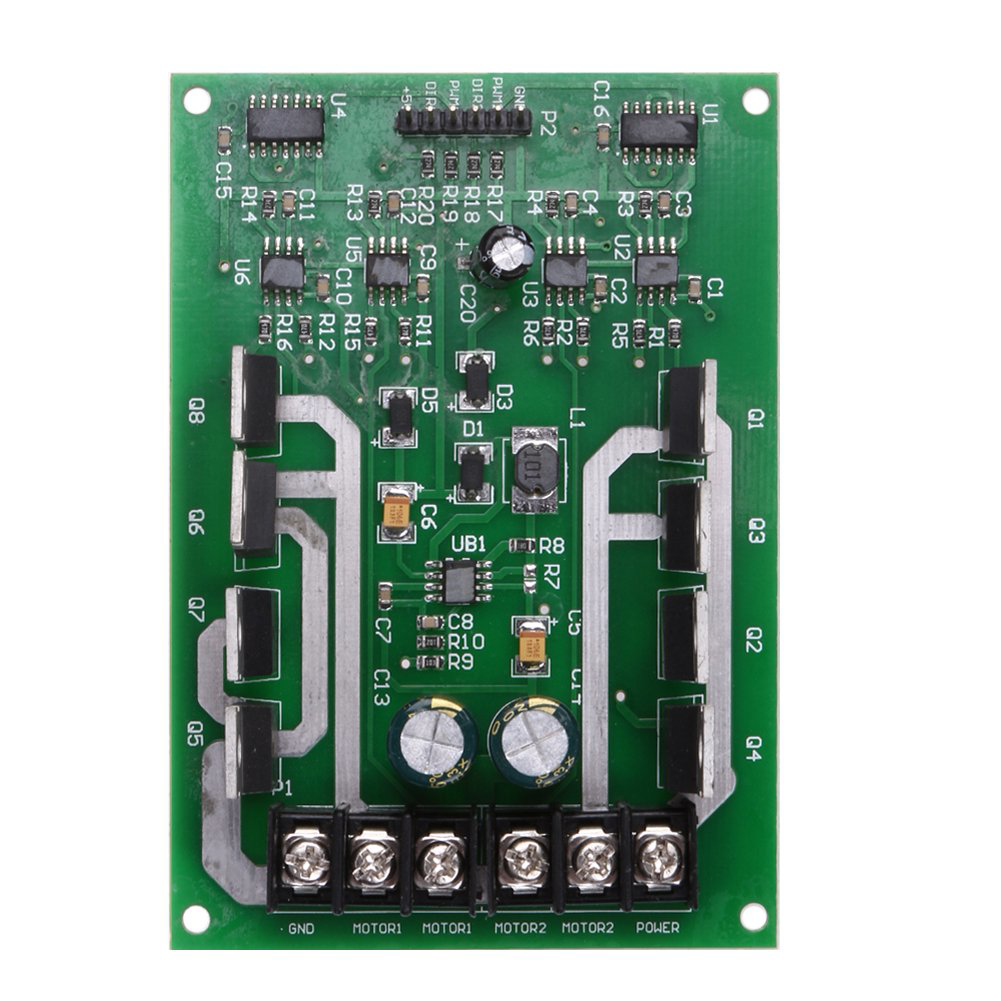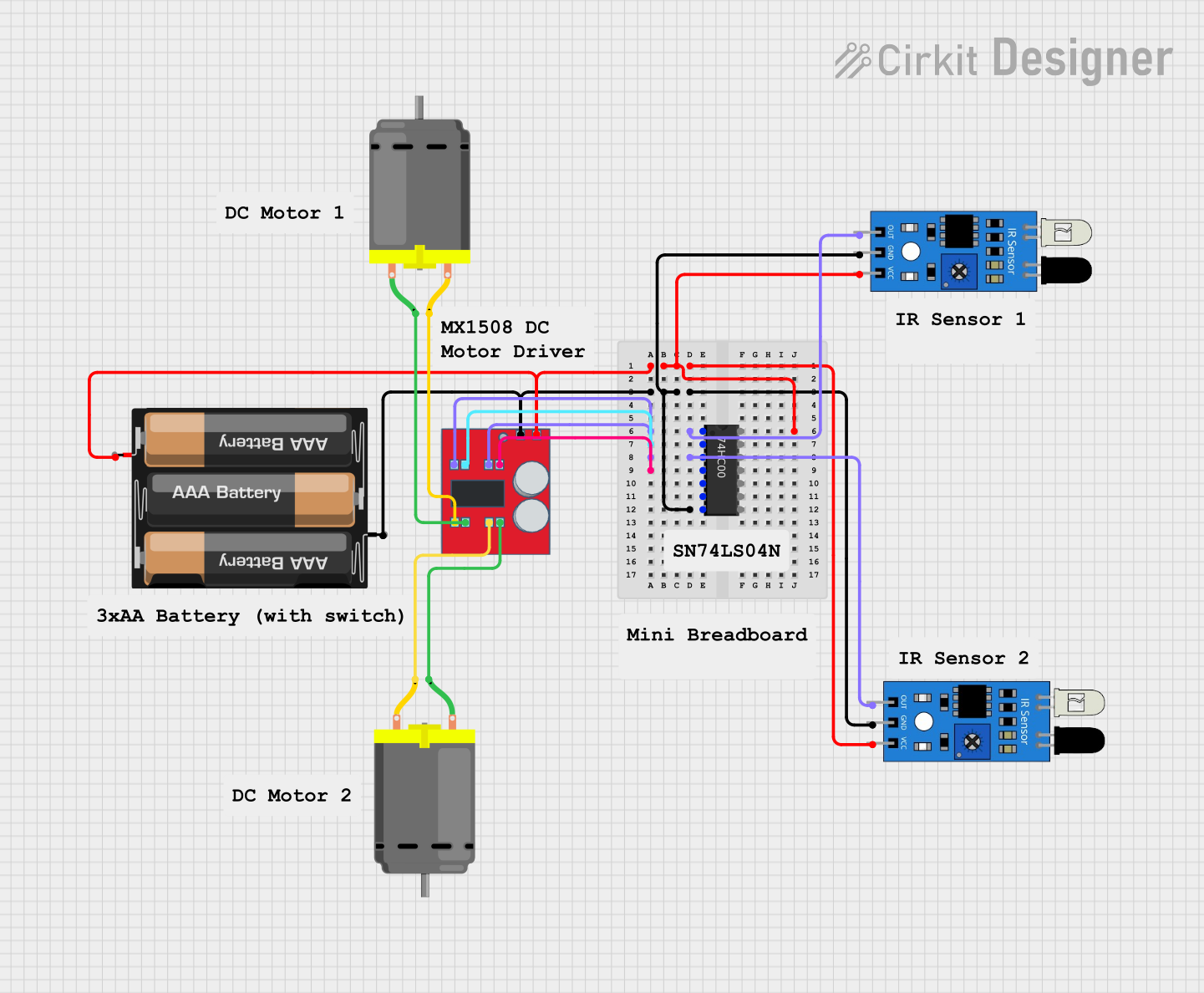
How to Use Dual Motor Driver MOSFET IRF3205: Examples, Pinouts, and Specs

 Design with Dual Motor Driver MOSFET IRF3205 in Cirkit Designer
Design with Dual Motor Driver MOSFET IRF3205 in Cirkit DesignerIntroduction
The Dual Motor Driver MOSFET IRF3205 by Thincol (Manufacturer Part ID: Thincols0frxp5vtu) is a high-efficiency MOSFET designed for driving dual motors in high-current and high-voltage applications. This component is widely used in robotics, automation systems, and motor control circuits due to its excellent thermal performance, low on-resistance, and high current-handling capability.
Explore Projects Built with Dual Motor Driver MOSFET IRF3205

 Open Project in Cirkit Designer
Open Project in Cirkit Designer
 Open Project in Cirkit Designer
Open Project in Cirkit Designer
 Open Project in Cirkit Designer
Open Project in Cirkit Designer
 Open Project in Cirkit Designer
Open Project in Cirkit DesignerExplore Projects Built with Dual Motor Driver MOSFET IRF3205

 Open Project in Cirkit Designer
Open Project in Cirkit Designer
 Open Project in Cirkit Designer
Open Project in Cirkit Designer
 Open Project in Cirkit Designer
Open Project in Cirkit Designer
 Open Project in Cirkit Designer
Open Project in Cirkit DesignerCommon Applications:
- Robotics and motorized systems
- Automation and industrial control
- Electric vehicles and drones
- High-power DC motor drivers
- Battery-powered systems
Technical Specifications
The IRF3205 is a power MOSFET optimized for high-speed switching and low power loss. Below are its key technical details:
Key Specifications:
| Parameter | Value |
|---|---|
| Manufacturer | Thincol |
| Part ID | Thincols0frxp5vtu |
| Maximum Drain-Source Voltage (VDS) | 55V |
| Maximum Continuous Drain Current (ID) | 110A |
| Gate Threshold Voltage (VGS(th)) | 2.0V - 4.0V |
| Maximum Power Dissipation (PD) | 200W |
| RDS(on) (at VGS = 10V) | 8 mΩ |
| Operating Temperature Range | -55°C to +175°C |
| Package Type | TO-220 |
Pin Configuration:
The IRF3205 MOSFET comes in a TO-220 package with three pins. The pinout is as follows:
| Pin Number | Pin Name | Description |
|---|---|---|
| 1 | Gate | Controls the MOSFET switching |
| 2 | Drain | Connects to the load |
| 3 | Source | Connects to ground or return path |
Usage Instructions
The IRF3205 is commonly used in H-bridge motor driver circuits or as a standalone motor driver. Below are the steps and considerations for using this component effectively:
How to Use:
Circuit Design:
- Connect the Drain pin to one terminal of the motor or load.
- Connect the Source pin to the ground or return path.
- Use a gate resistor (typically 10Ω to 100Ω) between the microcontroller's output pin and the Gate pin to limit inrush current and prevent oscillations.
- Ensure the Gate-Source Voltage (VGS) is within the recommended range (10V for full enhancement).
Power Supply:
- Ensure the power supply voltage does not exceed the maximum Drain-Source Voltage (VDS) of 55V.
- Use a decoupling capacitor (e.g., 100µF) near the power source to stabilize the voltage.
Heat Dissipation:
- Attach a heatsink to the TO-220 package to manage heat dissipation, especially in high-current applications.
- Consider using thermal paste for better heat transfer.
Protection:
- Add a flyback diode across the motor terminals to protect the MOSFET from voltage spikes caused by inductive loads.
- Use a zener diode or TVS diode to protect the Gate from voltage surges.
Example: Using IRF3205 with Arduino UNO
Below is an example of controlling a DC motor using the IRF3205 and an Arduino UNO:
// Example: Controlling a DC motor with IRF3205 and Arduino UNO
// Connect the Gate of the IRF3205 to pin 9 of the Arduino
// Connect the Drain to one terminal of the motor
// Connect the Source to ground
const int motorPin = 9; // Pin connected to the Gate of IRF3205
void setup() {
pinMode(motorPin, OUTPUT); // Set motorPin as an output
}
void loop() {
analogWrite(motorPin, 128); // Set motor speed to 50% (PWM value: 128)
delay(5000); // Run motor for 5 seconds
analogWrite(motorPin, 0); // Turn off motor
delay(5000); // Wait for 5 seconds
}
Best Practices:
- Always use a gate driver circuit or a microcontroller capable of providing sufficient gate drive voltage (10V) for optimal performance.
- Avoid exceeding the maximum ratings for voltage, current, and power dissipation.
- Test the circuit under load conditions to ensure stable operation.
Troubleshooting and FAQs
Common Issues and Solutions:
MOSFET Overheating:
- Cause: Insufficient heat dissipation or excessive current.
- Solution: Attach a heatsink and ensure the current is within the rated limit.
Motor Not Running:
- Cause: Incorrect wiring or insufficient gate voltage.
- Solution: Verify the connections and ensure the gate voltage is at least 10V.
MOSFET Not Switching:
- Cause: Gate resistor value too high or damaged MOSFET.
- Solution: Use a lower-value gate resistor (e.g., 10Ω) and replace the MOSFET if necessary.
Voltage Spikes Damaging the MOSFET:
- Cause: Inductive load without a flyback diode.
- Solution: Add a flyback diode across the motor terminals.
FAQs:
Q1: Can I drive the IRF3205 directly with a 5V microcontroller?
A1: While the IRF3205 can operate with a gate voltage as low as 4V, it is recommended to use a gate driver or a 10V gate voltage for optimal performance and to minimize RDS(on).
Q2: What is the maximum PWM frequency for the IRF3205?
A2: The IRF3205 can handle PWM frequencies up to 20kHz or higher, depending on the gate drive circuit and load conditions.
Q3: Can I use the IRF3205 for AC motor control?
A3: No, the IRF3205 is designed for DC motor control. For AC motors, consider using an IGBT or a TRIAC.
Q4: Do I need a heatsink for low-current applications?
A4: A heatsink is not necessary for low-current applications (e.g., <10A), but it is recommended for higher currents to ensure reliability.
By following the guidelines and best practices outlined in this documentation, you can effectively use the IRF3205 in your motor control and power electronics projects.